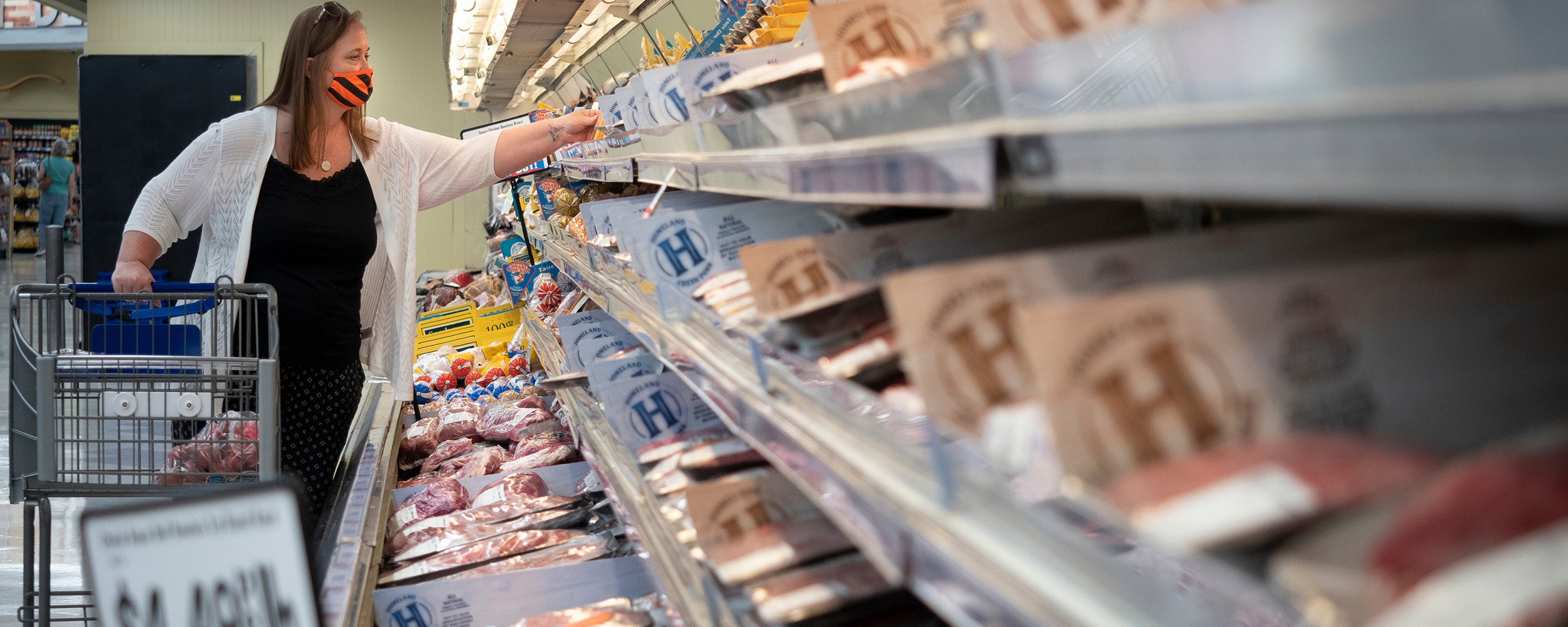
Market recovery found among COVID-19 concerns, study finds
Monday, April 19, 2021
Media Contact: Brian Brus | Agricultural Communications Services | 405-744-6792 | BBrus@okstate.edu
The agricultural industry has proven more resilient to pandemic disruptions than many had hoped, according to the latest market research by Oklahoma State University Extension experts.
“The Oklahoma region is doing better than expected,” said Courtney Bir, assistant professor in the Department of Agricultural Economics and OSU Extension specialist. “People are still concerned about travel, but they’re not so concerned about finding meat, milk, eggs and other food items at their local grocery stores. So even though we had a lot of barren shelves early in the pandemic, we seem to have bounced back, and that concern is now really low among Covid-related problems.”
In addition to a high level of consumer confidence in commercial supply chains, the recent study, Vaccine Intention for Oklahoma and Surrounding States, found a higher percentage of respondents from the Oklahoma region had received both doses of the COVID-19 vaccine when compared with the rest of the U.S.
However, Bir added, “There is still a large percentage of people who are unwilling to get the vaccine at all. If you add that figure to the number of children who have not been cleared to get those shots yet, we’re nowhere close to herd immunity and have a lot of work ahead of us.”
Because the COVID-19 virus does not recognize geographical borders, the study took a regional approach that included Oklahoma and surrounding states in its final analysis. That cluster includes Texas, New Mexico, Colorado, Kansas, Missouri and Arkansas.
Of the lifestyle areas examined, three were of the lowest impact for Oklahoma region respondents: ability to find meat, milk and perishable grocery items; lack of childcare impacting parents’ ability to work; and death of family members from COVID-19.
Bir’s report on pandemic impacts from last year is still available online for historical context. At that point in the spread of the virus, 79% of respondents from the Oklahoma region believed masks had some potential role in protecting U.S. society, although many reported their beliefs regarding masks were not positive. Then, a higher percentage of respondents from the Oklahoma region, when compared with the rest of the country, believed that wearing a mask would not prevent the spread of COVID-19 and that masks represented negative health consequences for wearers.
Those perspectives have evolved.
In the current study, respondents were asked on a scale from 1 to 5, from extremely unlikely to extremely likely, whether they would behave in ways that could decrease the spread of COVID-19 in the next nine months.
For all behavior options presented to survey participants, the mean response was not statistically different between the study region and the rest of the U.S.: Wearing a mask or face covering in public was the most likely behavior in which Oklahomans said they would participate.
“Those in the Oklahoma region indicated COVID-19 impacted their ability to execute travel plans more than the other lifestyle areas studied,” according to the study. “This is unsurprising, given the Centers for Disease Control and Prevention (CDC) recommendation to delay travel and stay at home to protect from COVID-19. Additional COVID-19 testing surrounding international travel and closure/minimization of crowds at popular vacation destinations also likely contributed to the impact on travel.”
Tied for second-most impacted lifestyle area were taking on education-related responsibilities for children and taking on care responsibilities for an adult family member. Many states, including Oklahoma, have left the mode of education – in person or online – up to the individual school districts, although they may provide guidelines or recommendations.
Related covid impact reports are available from OSU Extension.
